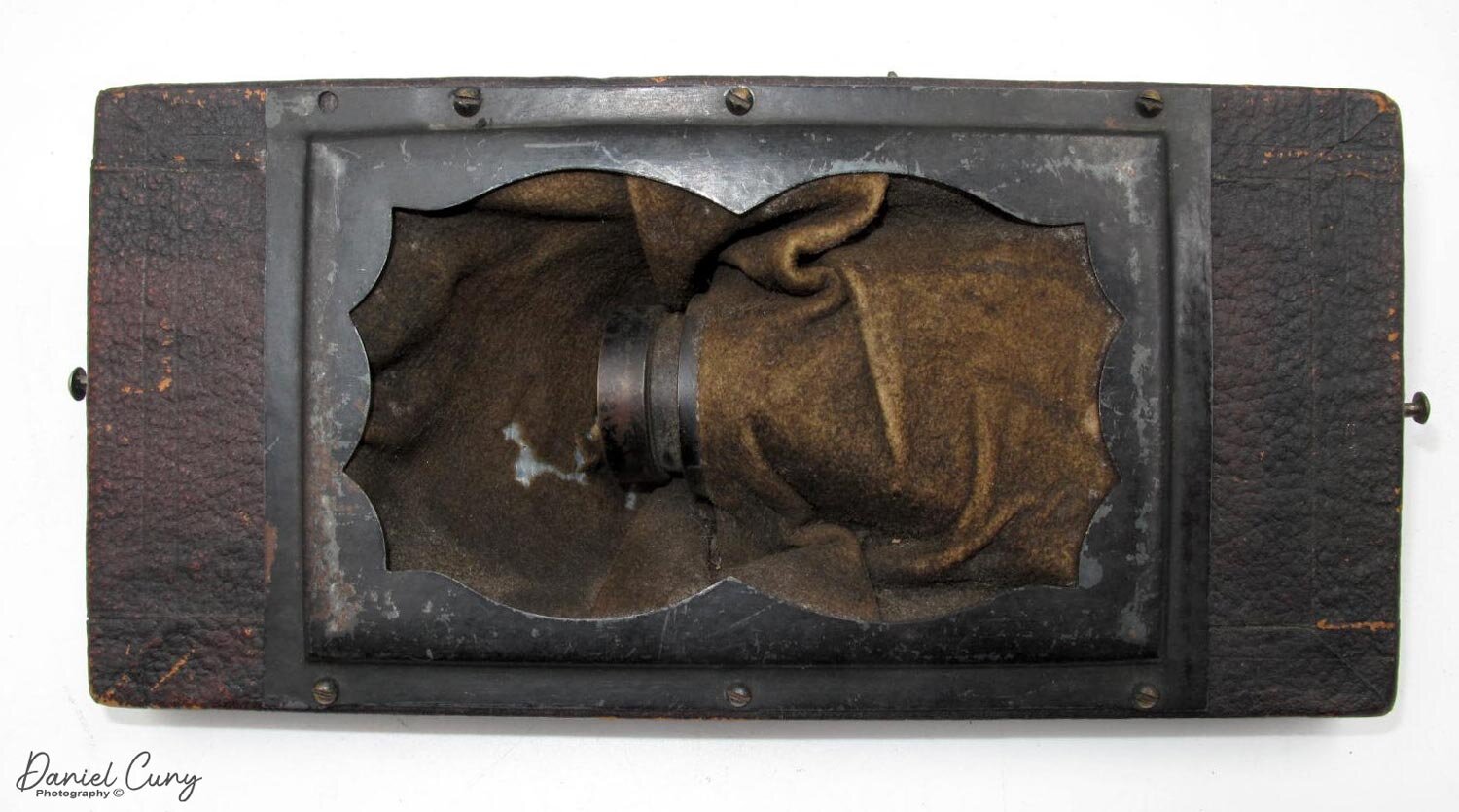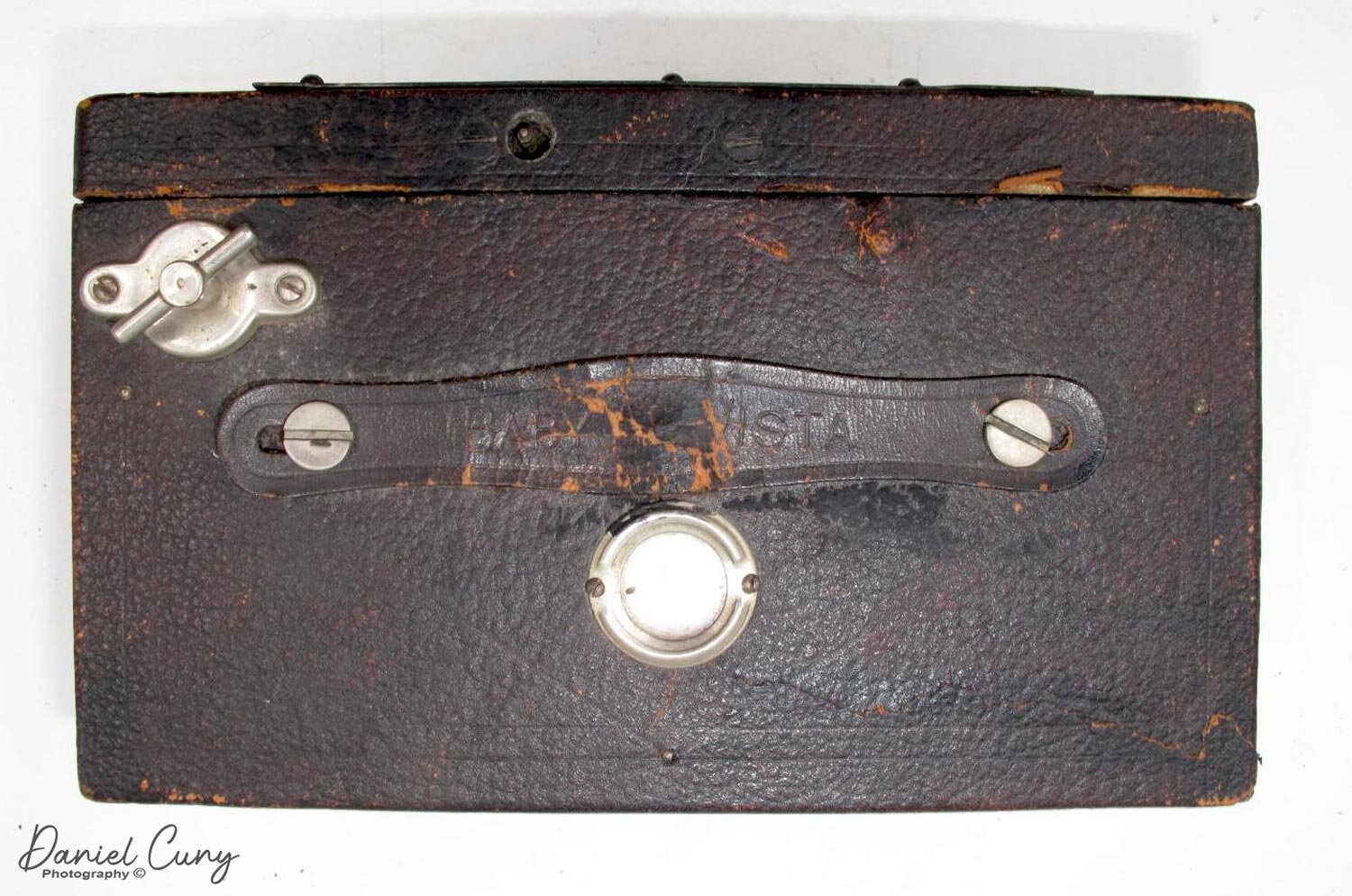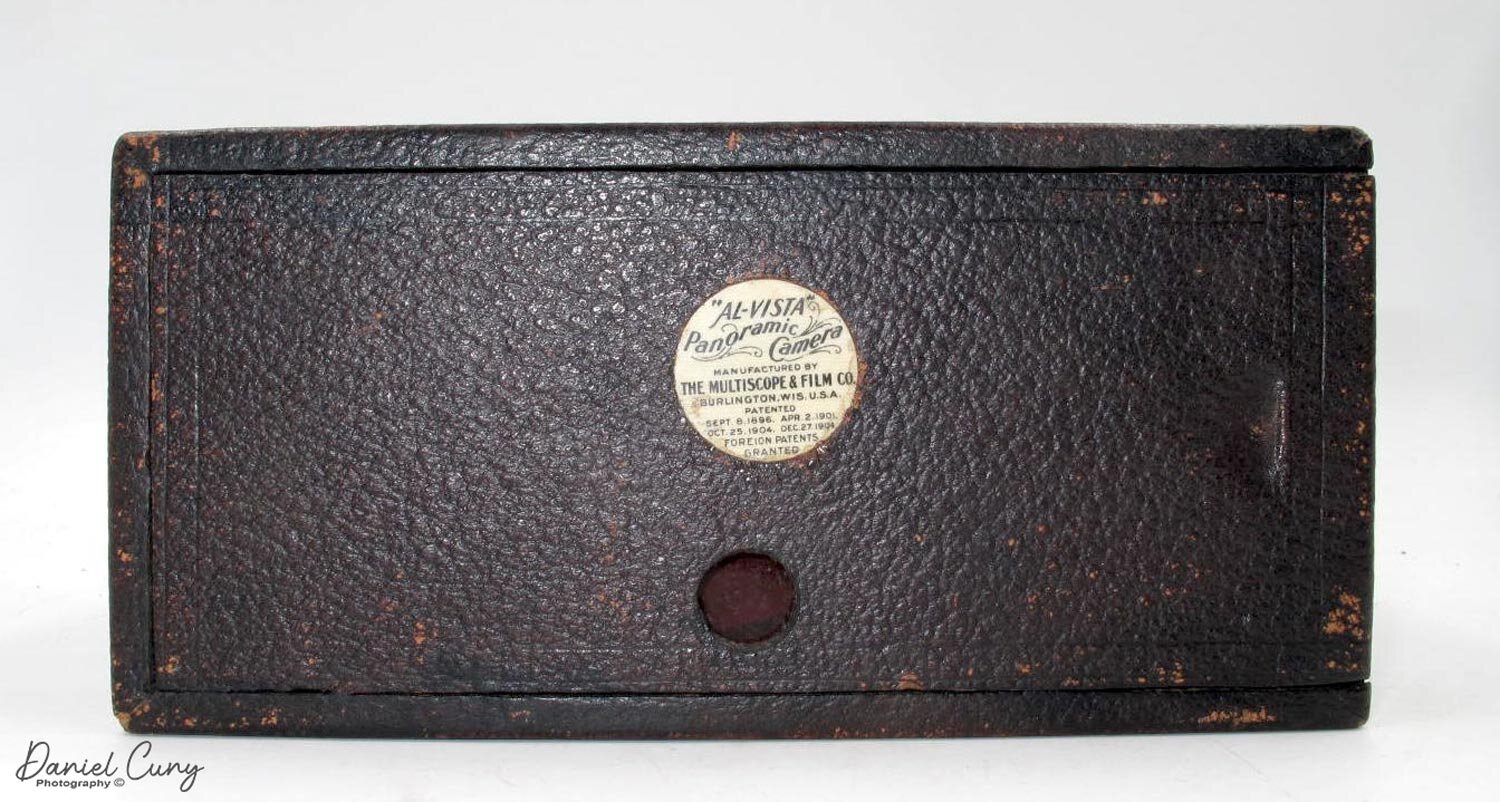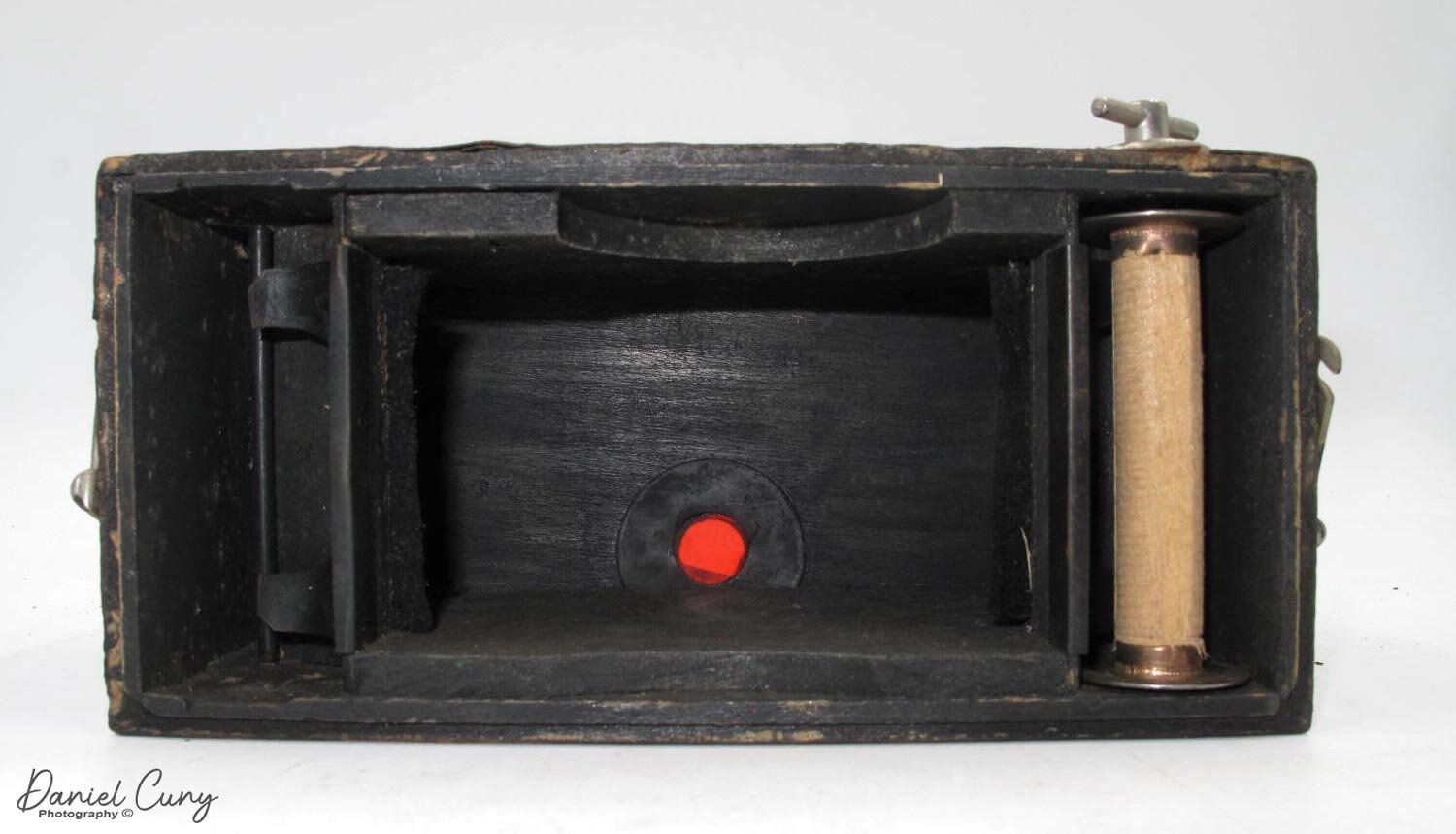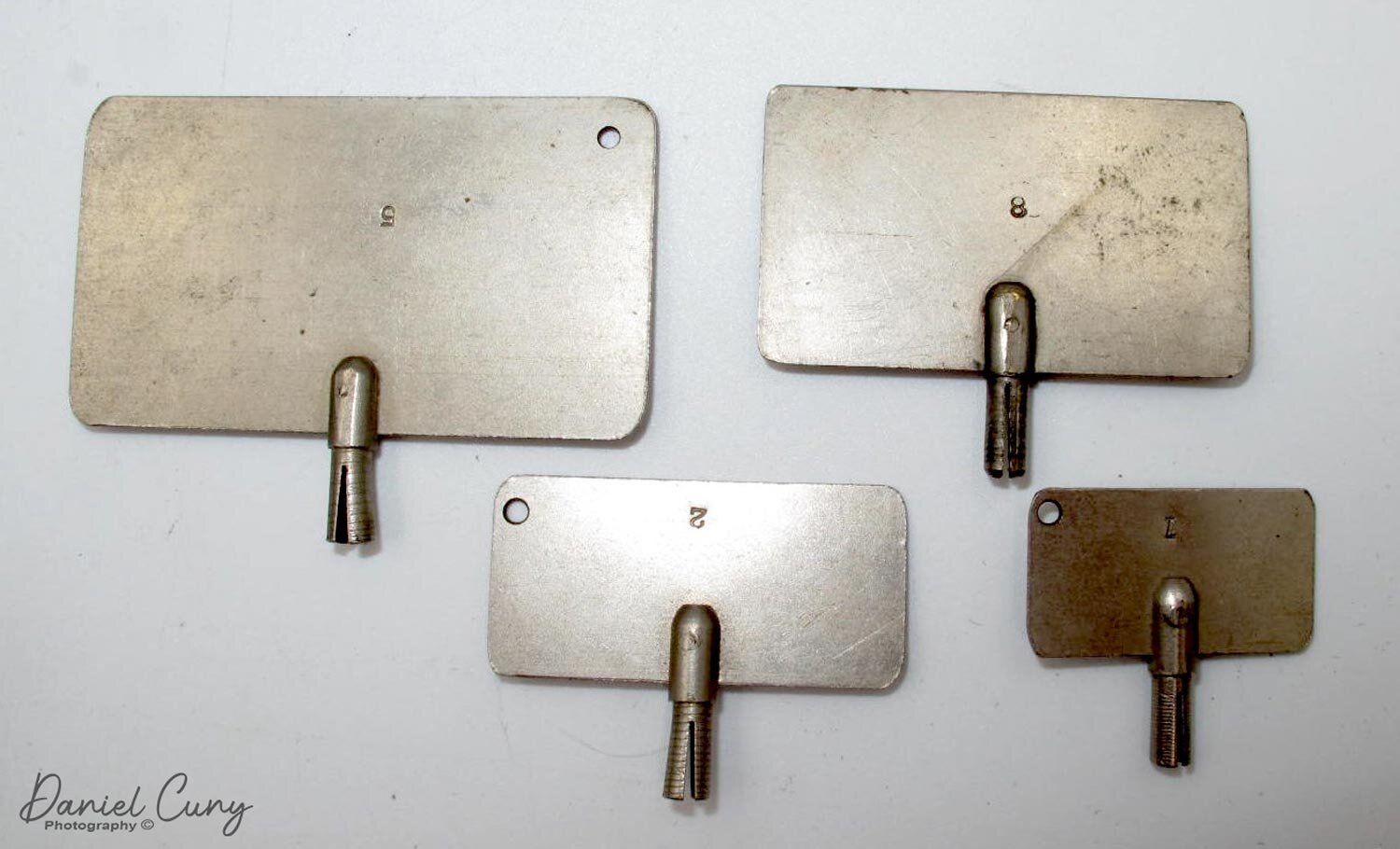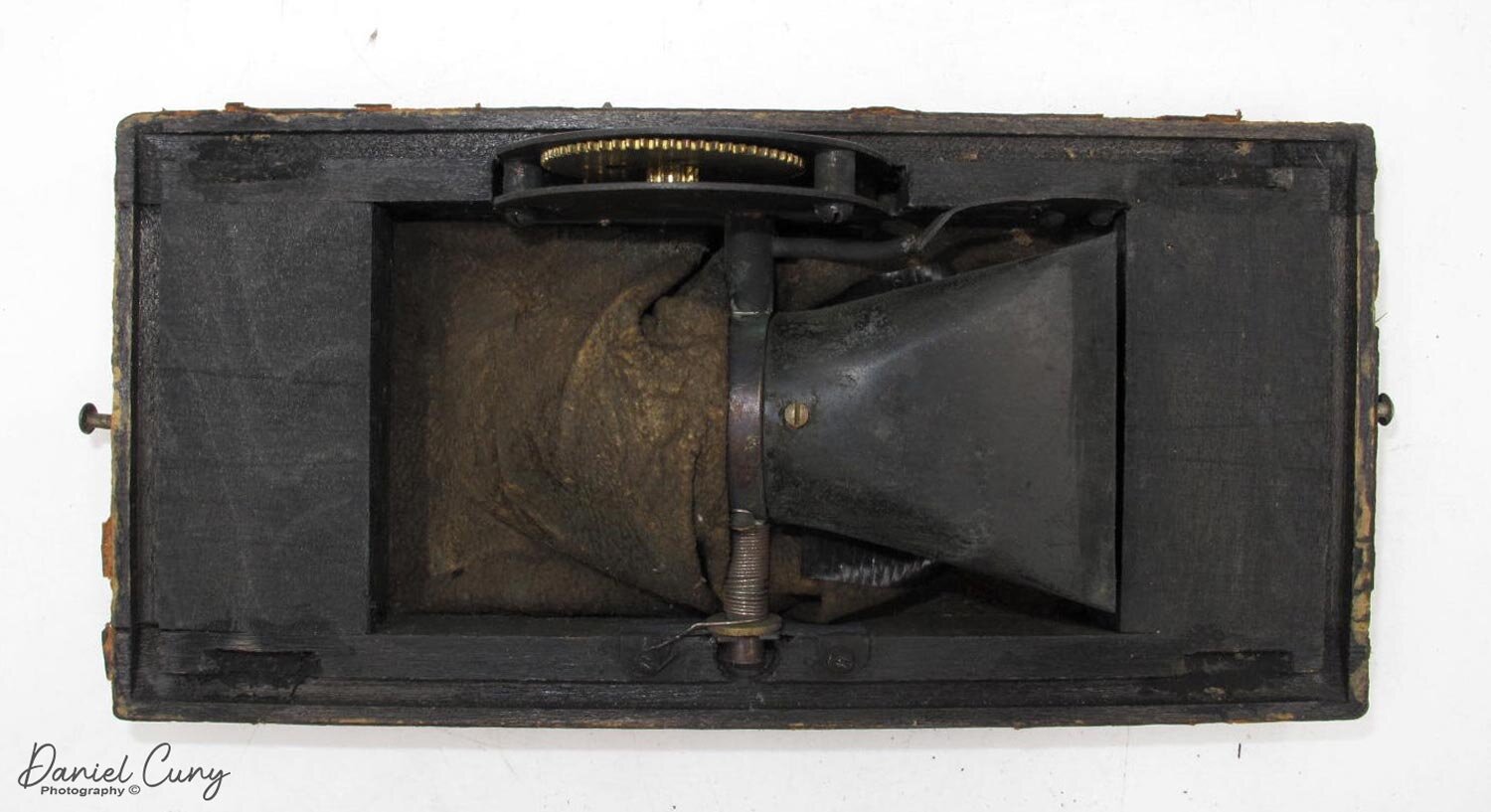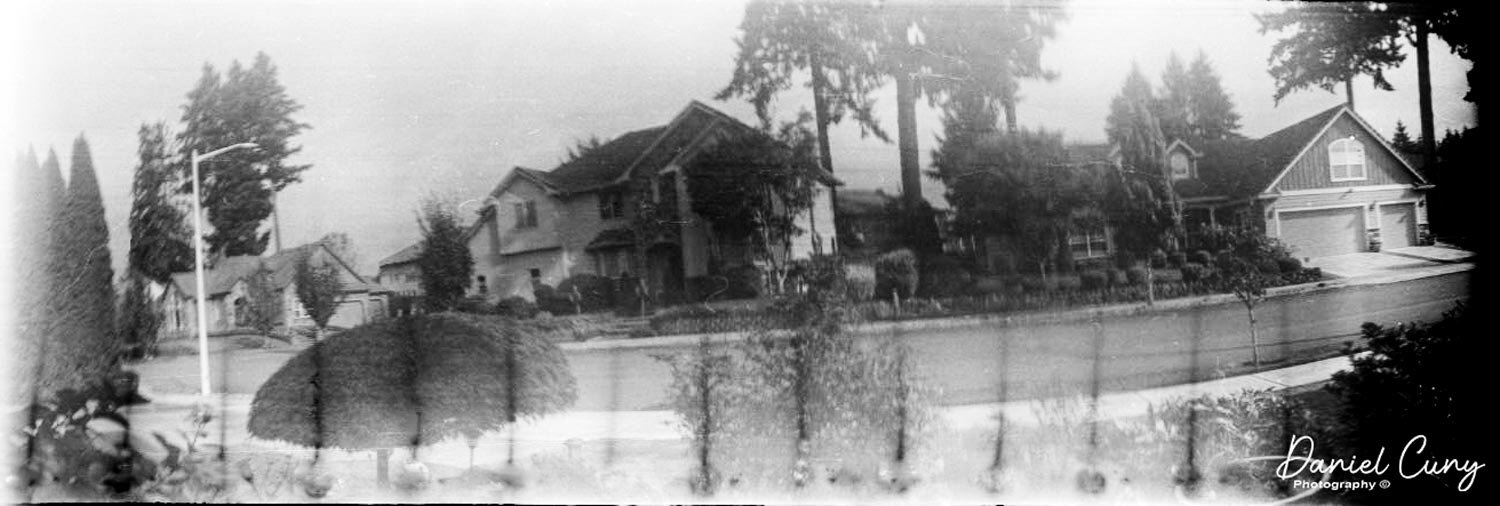I'm a big fan of panoramic images and cameras. In my collection, I own many panoramic photos, most likely in the neighborhood of 100 or so. There's just something magical about seeing a vast and sweeping image. It reminds me of what I see with our eyes when we look over a canyon or cityscape instead of a narrower vision in many photo images. One of my favorite panoramic cameras in my collection is the Baby Al-Vista camera made by The Multiscope & Film Company.
Baby Al-Vista compared to Al-Vista 5B and 35mm film.
Company History
The Multiscope & Film Company started in 1896 in Burlington, Wisconsin, by William Selig. Mr. Selig was an entrepreneur with interests in motion picture cameras as well as being a magician. The reason he formed the company was he purchased the patent for the Al-Vista camera from two gentlemen, Peter N. Angsten and Charles H. Gesbeck, in 1896, and 1897, they introduced their first camera. The Al-Vista camera uses a swinging lens, which produced an image on a 180-degree arc as the camera has a curved film plane. This concept was revolutionary for that time. This design and camera was the first successfully produced commercial camera of the time. At the end of 1908, they sold all patents, equipment, and rights to the panoramic cameras to Conley Camera Co. of Rochester, NY.
In 1900, the company had 25 employees making panoramic cameras. The Al-Vista camera model number signifies the height of the film in inches, and they had five different format models depending on the length of the photo taken. The sizes are 4,6,8,10 or 12. With this said, an Al-Vista 4B would have film 4 inches high, by either 4,6,8,10 or 12 inches long, depending on the mask used. On many of the cameras, there was an adjustable spring tension knob on top. Turning the knob controlled the swinging lens, which gave you four different shutter speeds depending on the spring tension.
My Baby Al-Vista Camera
The Baby Al-Vista was produced between 1906-1908 and used 120 size film and produces a 2 1/4" x 6 3/4" negatives. They came in two models. Model 1 had the adjustable spring tension control on the top of the camera to regulate shutter speed. Model 2, which I own, has something even better. You control the shutter speed by adding flags or fans that you put in a slot on top of the camera. The bigger the fan, the more air resistance you have and the slower shutter speed you have. Typically there are five different sizes of fans, but my model only has four. When sold initially, there were three different apertures you could put in between the camera and lens, but I only have one.
To use the camera is very basic. You cock the lens or move it to the taking position. The starting position is the lens pointing toward the left as you're holding it to take a photo. Remove the lens cap. Release the shutter by depressing the shutter release on top of the camera. Then put the lens cap back on before moving the lens back to the starting position. The fans are number one through five, with one being the smallest and five the largest. I'm missing fan number four. I believe the most challenging part is not knowing what the shutter speeds are for the fans used.
The camera's size is excellent for taking on trips as it's 6.5" wide x 3" tall and 4" deep. On top of the camera is the film advance knob on the far left, the slot for the fans, the shutter release, and a ball bearing level behind the handle. On the sides are just the locks to keep the front of the camera held to the camera body. Taking the front portion off is also where you load the film. The back also comes off to help in the process of loading film.
Results
Here is the good and bad news. I start to write my post early in the week, generally on Tuesday or Wednesday. I like to take photos with the camera, process the negatives, and digitize them in the article. As you can see in the images, the original bellows, leather material, have a few holes. I tried to patch them, first with a cloth tape. That didn't hold. Then I tried to glue a small piece of cloth, which wasn't pliable enough and made the hole worse. I tried three different kinds of leather and materials that didn't work except for one very dense negative.
I have since purchased a couple of other materials that I know will work, but for the sake of publishing this post, I only have one decent image to show, so my apologies. I will update this post with new pictures in a week or so when I've fixed the camera.
Conclusion
I owned a Baby Al-Vista about 30 years ago and sold it many years ago. Since then, I've been on the lookout for another Baby Al-Vista and found this one, a great and fun camera to use. I'm excited to put the final pieces back together and take the camera out for a good spin. The camera is light, easy to carry, and produces some fun images.
Thank you for taking the time to read this week's post. Please ask questions, or leave comments, and I'll reply as soon as possible. Until next week, Be safe.
Next week's posting will be on the Voigtlander Superb camera.
You can subscribe to my Camera Collecting Blog below.

